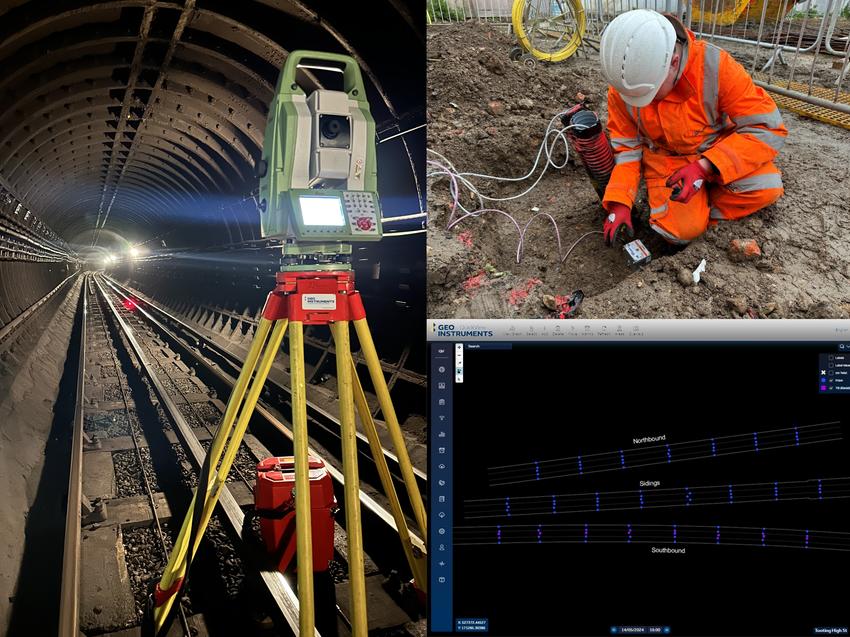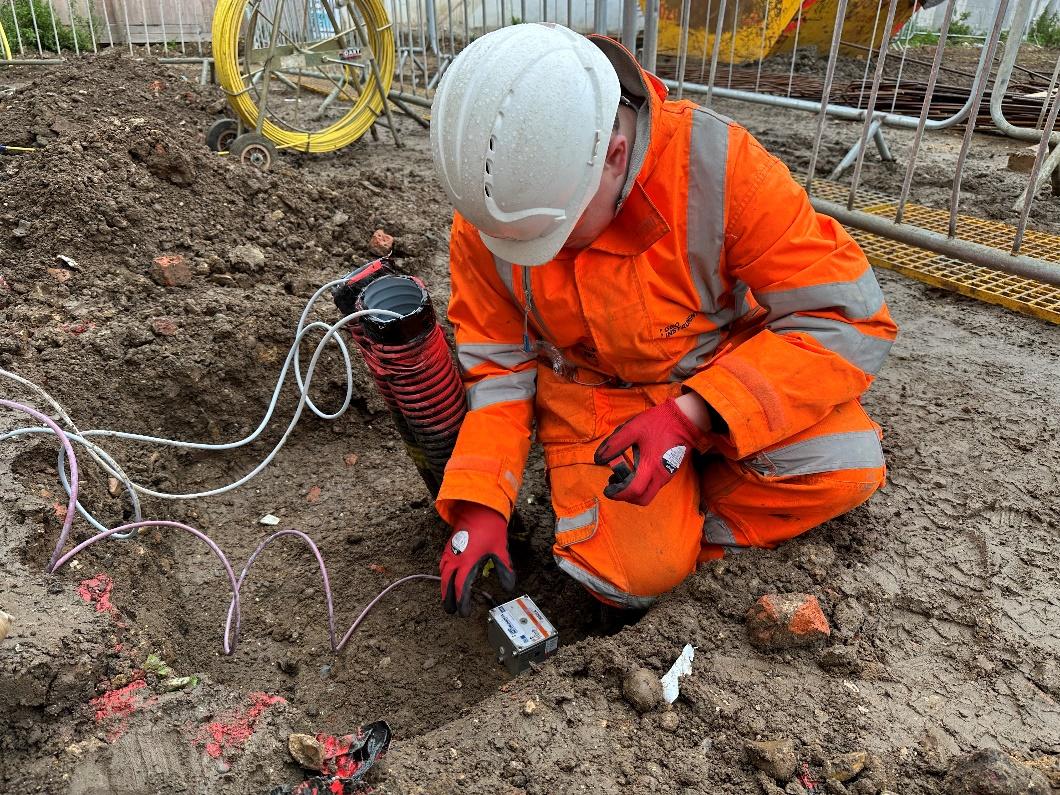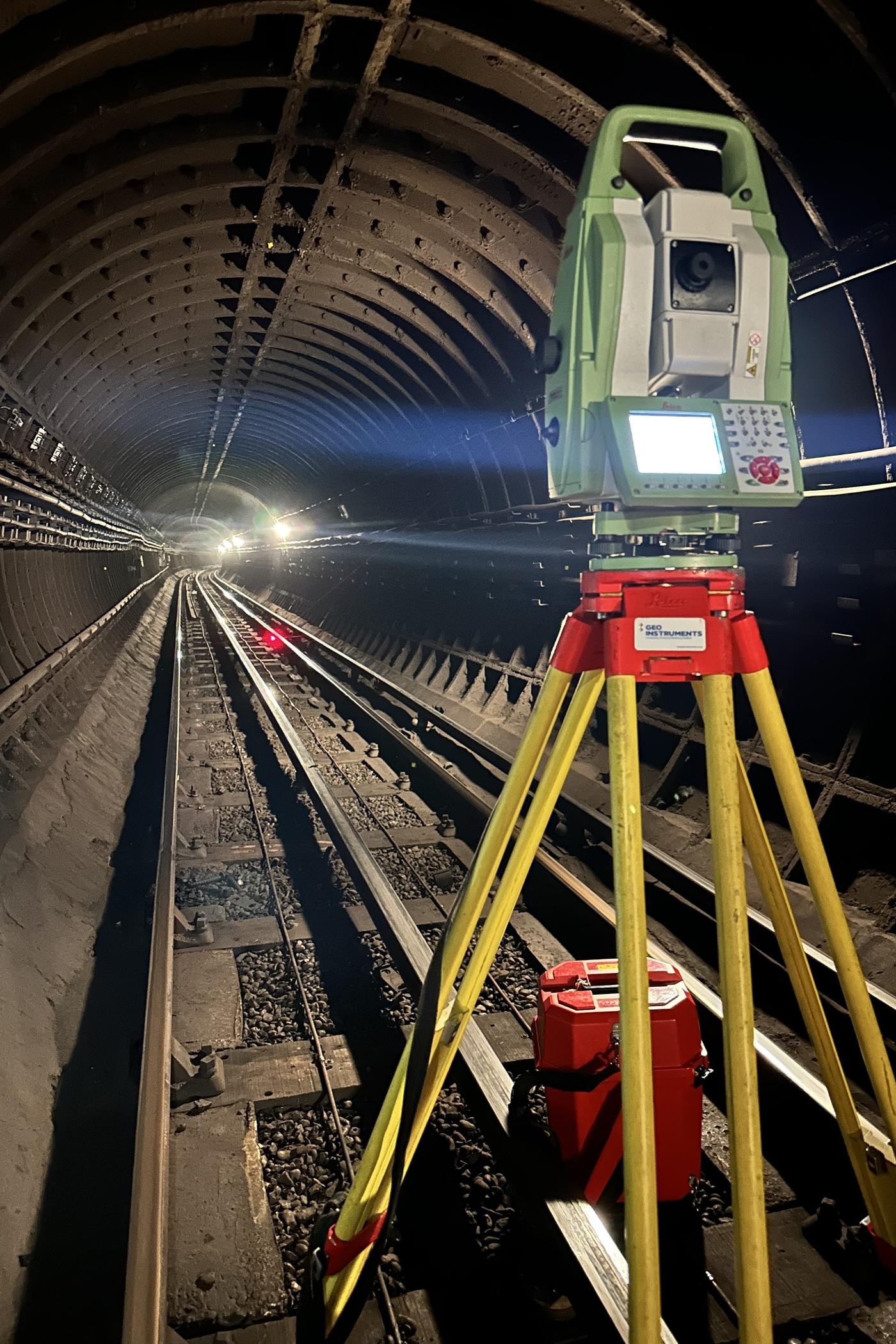GEO-Instruments are providing a comprehensive structural and environmental monitoring scheme for a hotel construction project in Tooting, South London. The development involves the construction of a new six storey hotel building along with a new basement.

The hotel basement and foundation construction mean that the London Underground tunnels and Thames Water assets running adjacent to the site could be susceptible to movement caused by the piling, excavation and construction works.
Nearby residential properties also have the potential to be influenced by the site works.
GEO-Instruments are responsible for monitoring the 3D movement of three Northern Line Tunnels in the zone of influence and are providing a complete tunnel and track monitoring scheme.
The scheme includes Manual and Automated 3D movement monitoring, as well as line and level, track geometry and condition surveys.
More than 100 3D retro survey targets were installed in the Northern Line tunnels. These are surveyed on a weekly basis during LU engineering hours.
Alongside the manual monitoring, 10 wireless biaxial tiltmeters are installed to the tunnel crown to provide 24-hour, real-time monitoring of tunnel movement. Clearance surveys of the tunnel interiors were required before installation of the Tiltmeters to ensure that the sensors did not infringe upon the kinematic envelope of passing trains.
Detailed Line and Level surveys were required to accurately determine the position of the London Underground tunnels beneath the site before the commencement of piling works. In order to achieve the necessary results, the GEO-Instruments survey team conducted a traverse survey from the site to Tooting Broadway station, through the Northern Line Tunnels to Colliers Wood station and back over-ground to the site.
Track geometry surveys were carried out using a Track Trolley fitted with a profiler used in conjunction with an Automated Total Station.
Photographic condition surveys were carried out early in the project programme in order to record the state of the tunnel interior prior to the commencement of works.
In order to measure the effects of piling works on the tunnels and Thames Water sewer assets adjacent to the site, four vibration sensors are installed at key locations at specified distances from the sheet piles. The instruments were buried in order to monitor in the required locations, while remaining protected from potential damage or disturbance from other site activity. Trenches were dug and cable was laid between each monitoring location to communicate the monitoring data to a rugged IP67 data logger.


Neighbouring the project are three existing residential properties monitored using more than 30 manually read 3D targets installed onto the building façades at varying heights. Manual surveys are conducted by survey teams using a Total station and nearby control targets established outside of the works' zone of Influence.
Roads adjacent to the project are being monitored by weekly manual levelling of 47 Precise Levelling Points (PLPs) installed into pavement kerbs. These are effective at detecting small changes in height from potential settlement caused by the excavation works.
Monitoring survey data is collected and presented via GEO-Instruments’ QuickView online platform. Alert triggers are set at limits defined by the specification and automated alerts are configured so the site team can receive alarm notifications if thresholds are breached.
Underpinning and sheet piling works are complete and excavation is now underway.
Find out more about our monitoring schemes for building construction projects.

